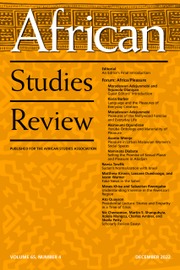Part of review forum on “A dam for Africa”
Few, if any, governmental initiatives have captured the collective Ghanaian political and cultural imagination over the sixty-plus years since Ghana’s 1957 independence as the construction of the Akosombo Dam and the massive artificial lake it created (Lake Volta). Constructed under the auspices of a complicated Cold War-era public-private partnership shepherded by the government of Kwame Nkrumah, the dam promised Ghanaians everything from national electrification to an infrastructural bedrock upon which to build the young country’s emergent industrial economy. Accompanying the dam as part of the broader Volta River Project (VRP) was the plotting of a new model town (Akosombo) just south of the dam site. International by design, Akosombo township was—alongside its fellow planned city Tema to the west—to represent the new modern and ordered Ghana that Nkrumah aimed to create. Likewise, the dam project heralded in improvements to the country’s transportation infrastructure, including the modernization of its road and rail networks as well as opening the potential for much more expansive water transportation along the new lake. Furthermore, Lake Volta allowed for the rapid growth of the country’s freshwater fishing industry as communities living alongside the lake quickly turned to fishing following the flooding.
A monumental achievement in its richness and depth, Stephan F. Miescher’s A Dam for Africa: Akosombo Stories from Ghana guides its readers through the complex history of the Akosombo Dam and broader VRP in both the history of postcolonial Ghana and in the national mythmaking that accompanies that history. For Nkrumah, no other national project came close to rivaling the VRP, for, in the dam, he saw a future of political and economic self-sufficiency that ensured not only Ghana’s political independence, but also its economic independence. The dam promised electricity and electricity promised to open doors to everything from a modern industrial economy to higher standards of living marked by a consumer market for such modern appliances as the refrigerators, radios, and televisions advertised in the country’s newspapers. The dam, in effect, was the embodiment of Ghana’s national aspirations.
More than any scholar to date, Miescher, in A Dam for Africa, takes seriously these aspirations as he, in many ways, presents the dam as a cipher through which to interrogate Ghanaians’ hopes, ambitions, and frustrations with its political leadership, national development, and Ghana’s place within the international community. Embodying in a single book a transnational political, business, cultural, gender, environmental, and labor history, among others, A Dam for Africa intricately dissects the intersecting pathways in which such high politics phenomena as the complicated geopolitical negotiations over the VRP’s funding structure and the international rivalries they highlighted equally affected and were affected by the experiences, ambitions, and interests of countless Ghanaians watching from afar. As Miescher shows in the book’s third part, Ghanaians took seriously the government’s promises for the dam and the broader VRP. For those displaced by the flooding of the Volta River basin, such understandings resulted in years-long advocacy across multiple governments for the Ghanaian state’s failures to live up to the promises of resettlement. Similar advocacy, as Miescher shows in Chapter Seven, arose around demands for rural electrification. Likewise, the book concludes with the invocations of Nkrumah and the dam that arose during the electricity shortages of the early 2010s as Ghanaian television and radio presenters, cartoonists, and writers, among others connected the resultant electricity load-shedding in the country to narratives of national decline and disappointment.
What Miescher does in A Dam for Africa, however, is more than offer a rich analysis of such public pressure and reaction as part of a general claim-making process. Instead, the care, detail, and nuanced understandings of Ghanaian political and cultural life exhibited in the book take as a fundamental starting point the many convergent and divergent meanings Ghanaians have embedded within the dam over the decades since its construction. As Miescher uniquely shows over the course of the book, the Akosombo Dam carries meanings far beyond that of a mere infrastructural development project for many, if not, most Ghanaians. For many, it serves as a physical embodiment of postcolonial Ghana—both its promises and disappointments. More than anything, A Dam for Africa brings these meanings to life, untangling them with a level of skill that could only be honed through the multi-decades long oral and archival research Miescher has committed to in Ghana.


